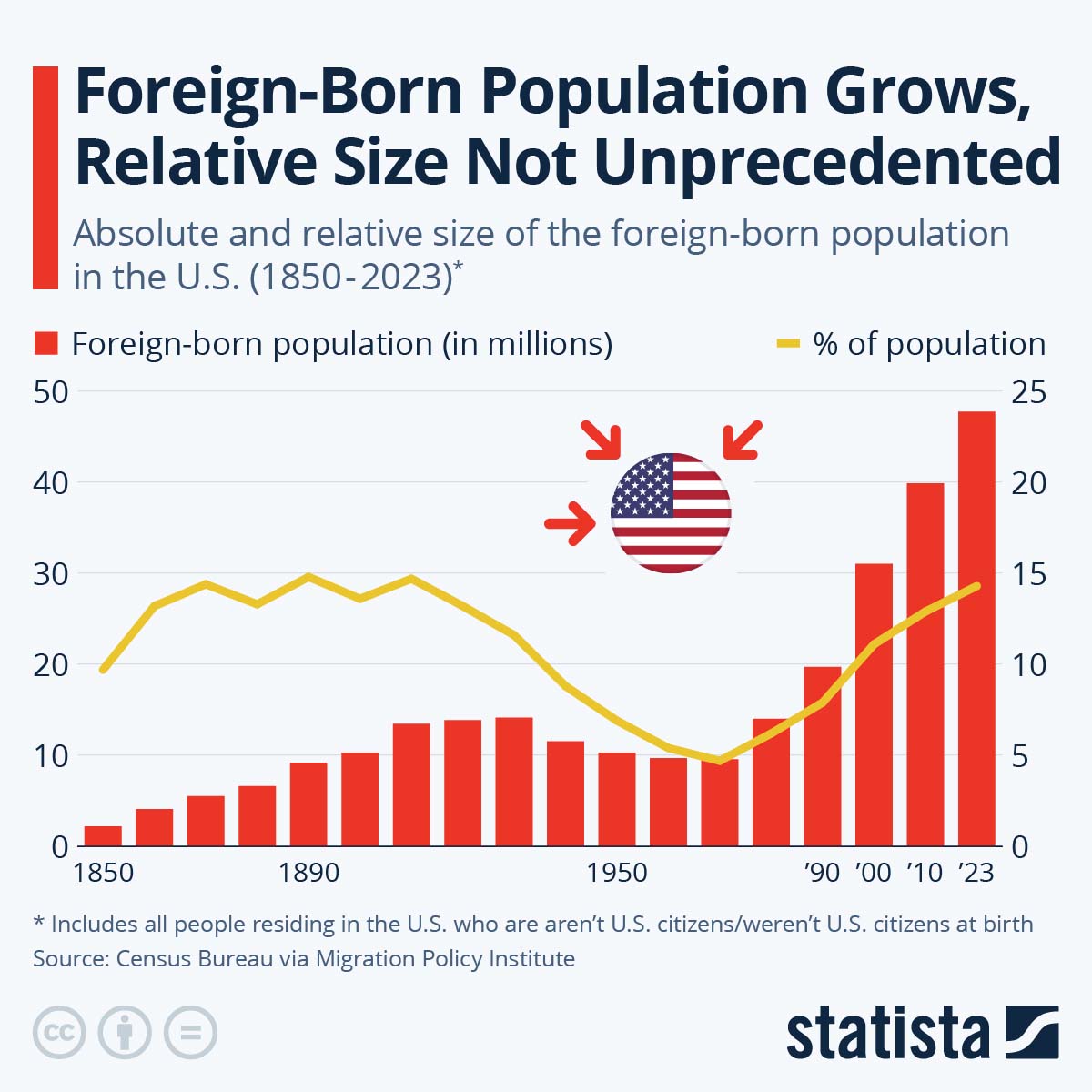Although the number and proportion of immigrants in the U.S. have generally increased, the current level of the foreign-born population is not without precedent. As of 2023, 14.3% of the U.S. population was foreign-born, according to U.S. Census data. Historical data from the Migration Policy Institute shows this share approached 15% in the late 19th and early 20th centuries, before dropping to a low of 4.7% in 1970.
Net migration between mid-2020 and mid-2021 fell to 247,000, down from about 600,000 in 2018–2019 due to the pandemic. However, it rebounded to 1.6 million between 2022 and 2023, bringing the total immigrant population to 47.8 million. Annual net migration above 1 million aligns with pre-Trump era trends, peaking at 1.05 million in 2015–2016.
The term foreign-born includes anyone residing in the U.S. who is not a U.S. citizen by birth—this encompasses naturalized citizens, permanent and temporary residents, asylum seekers, and undocumented immigrants.

Original Source: https://www.statista.com/chart/8083/immigrants-foreign-born-united-states/




